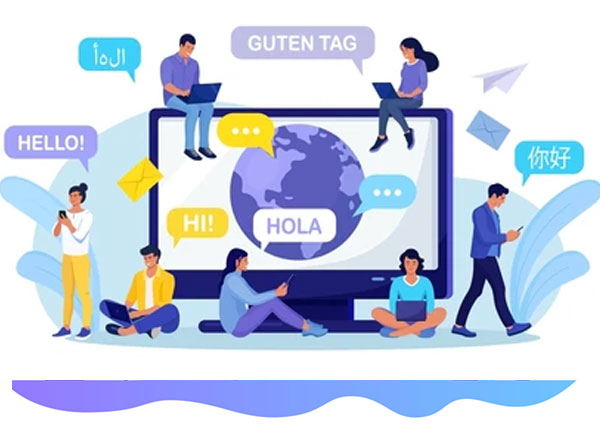Multilingual SEO
Multilingual SEO, also known as international SEO, is the process of optimizing a website to rank well in search engine results for multiple languages and regions. It's a crucial strategy for businesses or organizations that want to reach a global or multilingual audience. Multilingual SEO involves a combination of technical, content, and off-page optimizations to ensure that your website performs well in search results for users speaking different languages or located in different countries. Here are some key considerations for effective multilingual SEO:
Keyword Research :Conduct thorough keyword research for each target language and region. Understand how users in different locations search for products or services similar to yours. Utilize keyword research tools and consider consulting native speakers.
Hreflang Tags :Implement hreflang tags in your website's HTML to tell search engines which language and regional variations of a page should be served to users. This helps search engines display the most relevant content to users in different regions.
Content Translation :Translate your website's content accurately and naturally into the target languages. Avoid machine translation and opt for human translation or localization services to ensure high-quality content.
URL Structure :Choose a URL structure that is both user-friendly and SEO-friendly. Consider using country-code top-level domains (ccTLDs), sub domains, or subdirectories to indicate language and region.
Metadata Optimization :Optimize meta titles, meta descriptions, and header tags in the target languages. This ensures that your content is not only translated but also tailored for each specific audience.
Content Markup :Utilize Schema.org markup to provide structured data to search engines in multiple languages. This helps search engines understand the context and content of your pages.
Language and Region Targeting :Use Google Search Console and Bing Webmaster Tools to set language and region targeting for your web pages. This provides search engines with additional information about your target audience.
Build high-quality, region-specific backlinks to improve the authority of your website in various regions. Local link building can boost your rankings in local search results.
Mobile Optimization :Ensure that your website is mobile-friendly for users in different regions, as mobile searches are prevalent worldwide.
Site Speed and Hosting :Consider hosting your website on servers closer to your target audience's location to improve page loading times.
 User Experience (UX) :
User Experience (UX) : Tailor the user experience for each language and region. Consider cultural nuances, design preferences, and payment methods that resonate with local audiences.
Regular Audits and Updates :Continuously monitor your website's performance in different regions and languages. Regularly update content, metadata, and hreflang tags as needed.
Cultural Sensitivity :Be culturally sensitive and avoid any content or imagery that may be offensive or inappropriate in specific regions.
Geotargeting :Specify your target audience's location in Google Search Console. This helps search engines understand your website's primary target market.
Multilingual SEO is a complex and ongoing process that requires careful planning and maintenance. By implementing these strategies, you can ensure that your website is well-optimized for global or multilingual audiences, leading to increased visibility and a broader reach in search engine results.
